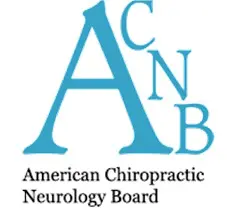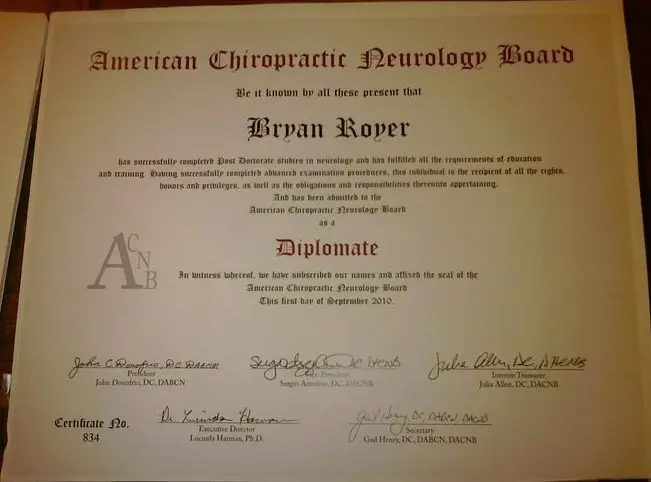
Dr. Royer Completes Functional Neurology Specialty
Dr. Bryan D. Royer of Toledo recently achieved his Functional Neurology Certification after years of study. He is now treating patients at Harmony Chiropractic Center, Inc.
Functional Neurology is a specialty centered on the assessment, capacity, and restoration of the human nervous system, applying sensory and cognitive based therapies, to promote integrity, neuroplasticity and functional optimization of the system. Functional neurology does not utilize medications or surgery, but may employ some combination of chiropractic adjustments, various therapies, and recommended lifestyle modification.
Functional Neurology is one of several areas of specialty within chiropractic, also including sports medicine, orthopedics, radiology, nutrition and rehabilitation. Postdoctoral certification in functional neurology takes at least 3 years of courses. Doctors of chiropractic can become certified through the American Chiropractic Neurology Board. Credentialed doctors earn Diplomate of the American Chiropractic Neurology Board (DACNB).

Functional neurologists use the sensory system to focus on stimulating specific areas of the brain to exercise it and increase its capacity. The five senses that most people think, like smell, sight, touch, taste and hearing of can used, but balance and proprioception are some of the most important senses. To ensure survival, the body must know where it is in space in order to prevent falls. Your brain is constantly re-calibrating extremely accurate maps of your body in space and your surroundings.
COMMON CONDITIONS HELPED BY CHIROPRACTIC NEUROLOGY TREATMENTS
Some of the problems that may be helped by those holding a specialty in chiropractic neurology include:
- Migraine Headaches
- Tension Headaches
- Other Types of Headaches
- Vertigo/Dizziness
- Head Injuries/Traumatic Brain Injuries
- Concussions
- Post-Concussion Syndrome
- Neck Pain
- Whiplash and Complications from Car Crashes
- Peripheral Neuropathies
- Numbness and Tingling
- Movement Disorders
- Cervical Dystonia
- Tourette’s Syndrome
- Writer’s Cramp
- Torticollis
- Shoulder Pain
- Low Back Pain
- Temporomandibular Joint Disease (Jaw Pain)
- Attention Deficit Hyperactivity Disorder (ADD/ADHD)
- Dyslexia
- Stroke Rehabilitation
- Autism Spectrum Disorder
- Other neurological disorders
